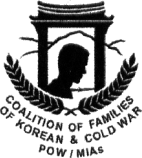The Cold War
The Cold War (1945–1991) was the continuing state of political conflict, military tension, and economic competition pitting China, the former Soviet Union, and their satellite communist nations (the East) against the U.S., Europe, and their satellite democratic governments (the West). Although the primary participants' military forces never officially clashed, they supported wars between smaller nations that often reflected the rivalry between the larger nations. The Korean War (1950–1953), the Vietnam War (1955-1975), the Soviet war in Afghanistan (1979–1989), typically featured one of the larger nations in conflict with a smaller nation that was in turn supported unofficially by opposing larger nations.
One constant during the Cold War had U.S. and Soviet Bloc intelligence organizations keeping close watch on defense readiness of the opposing side. According to U.S. records, the West carried out more than 3,000 reconnaissance flights annually at the height of the Cold War. Roughly half of these missions occurred over or near the People’s Republic of China, the former Soviet Union, and other Communist influenced nations.
The Department of Defense (DoD) is currently investigating fourteen mission losses from the Cold War era in which 126 U.S. aircrew members remain unaccounted for. Available evidence suggests that most of these losses were over water.
Airmen who flew reconnaissance missions between 1950-1953 took part in operations over Korea one day then along the coasts of China or the Soviet Union another. In doing so, they were essentially participating in two separate wars. This is reflected in the classification of their losses. Airmen who went down over Korea are considered Korean War losses. Those who went missing over other areas are classified as Cold War losses. It doesn’t matter that a mission flown the day before their loss was flown in the other war. This has become problematic for the families.
Like the Cold War itself, stories of service personnel who were lost under circumstances inherent to the war's intrigue are a matter of intrigue themselves. They may never be resolved.
(DPAA/Coalition)
The Cold War (1945–1991) was the continuing state of political conflict, military tension, and economic competition pitting China, the former Soviet Union, and their satellite communist nations (the East) against the U.S., Europe, and their satellite democratic governments (the West). Although the primary participants' military forces never officially clashed, they supported wars between smaller nations that often reflected the rivalry between the larger nations. The Korean War (1950–1953), the Vietnam War (1955-1975), the Soviet war in Afghanistan (1979–1989), typically featured one of the larger nations in conflict with a smaller nation that was in turn supported unofficially by opposing larger nations.
One constant during the Cold War had U.S. and Soviet Bloc intelligence organizations keeping close watch on defense readiness of the opposing side. According to U.S. records, the West carried out more than 3,000 reconnaissance flights annually at the height of the Cold War. Roughly half of these missions occurred over or near the People’s Republic of China, the former Soviet Union, and other Communist influenced nations.
The Department of Defense (DoD) is currently investigating fourteen mission losses from the Cold War era in which 126 U.S. aircrew members remain unaccounted for. Available evidence suggests that most of these losses were over water.
Airmen who flew reconnaissance missions between 1950-1953 took part in operations over Korea one day then along the coasts of China or the Soviet Union another. In doing so, they were essentially participating in two separate wars. This is reflected in the classification of their losses. Airmen who went down over Korea are considered Korean War losses. Those who went missing over other areas are classified as Cold War losses. It doesn’t matter that a mission flown the day before their loss was flown in the other war. This has become problematic for the families.
Like the Cold War itself, stories of service personnel who were lost under circumstances inherent to the war's intrigue are a matter of intrigue themselves. They may never be resolved.
(DPAA/Coalition)
